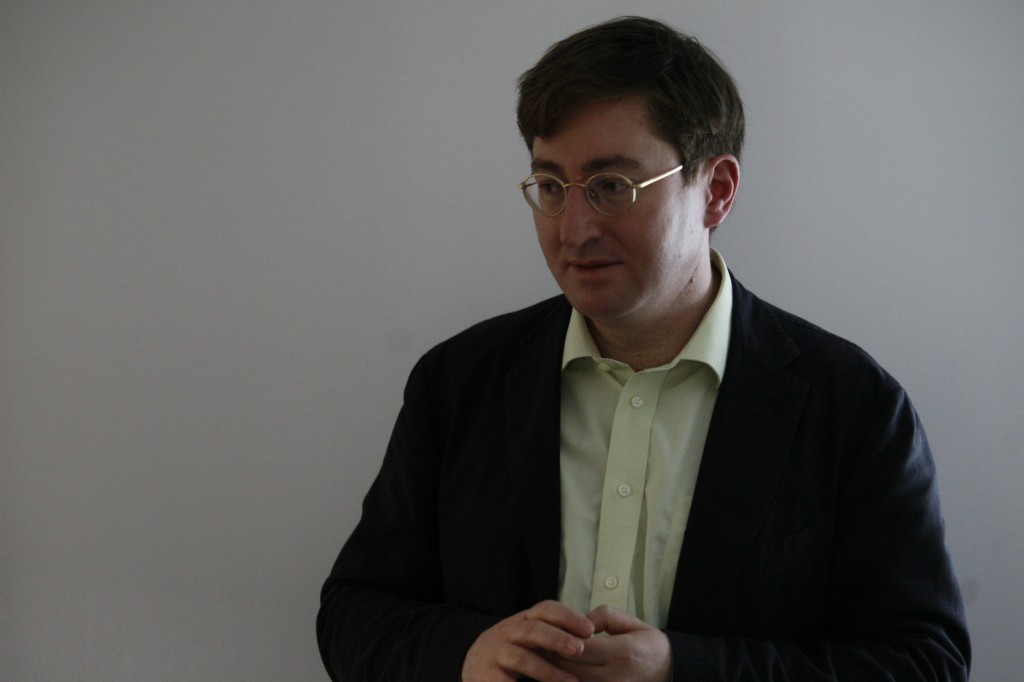
On Thursday, November 5th, James W. McAllister, associate professor in Philosophy at the University of Leiden and author of Beauty & Revolution in Science, gave a spirited lecture on the unusual topic of the relationship between beauty and truth in science. Dr. McAllister’s lecture tied into the core course for PY students on Objectivity. In addition to the assembled project year students and instructor Bruno Macaes, Co-Dean Peter Hajnal and faculty member Catherine Toal were also present.
Dr. McAllister sketched out a brief but elegant argument with the provocative starting point: “Is beauty a sign of truth in science?” Dr. McAllister quickly moved to define his terms, dividing the consideration of beauty in science into two broad categories; projectivism and objectivism. As the names suggest, the objectivist position maintains that beauty is an objective and measurable property of theories, while the projectivist position suggests that the aesthetic value of a theory is the result of projection onto theories by the relevant scientific community that considers them. McAllister took a projectivist position, defining beauty as in motion and evolving over time. Radical, paradigm shifting theories are usually regarded as ugly, and as they build a track-record of empirical success, they begin to be perceived as more beautiful.
On Dr. McAllister’s account, the most pressing issue from the perspective of utility concerns the question: “Is beauty linked to the truth, validity, adequacy, or effectiveness of theories?” His answer was that an a priori link seems unlikely because, empirically and historically speaking; there is an incredible diversity of responses. Furthermore, it is not really possible to substantiate the claim that there is something distinct from, but necessarily linked with, truth. Instead, his hypothesis was one of aesthetic induction, where aesthetic preferences evolve in response to empirical performance. Therefore, the relationship between beauty and truth in science is established inductively in an a posteriori manner and is “perfectly reliable” for as long as the present scientific paradigm happens to endure.
During the presentation, students and faculty were able to ask questions of Dr. McAllister. Some questions were merely requests for clarification while others represented serious challenges to his hypothesis. McAllister also participated in the seminar that followed the presentation and defended his position further, particularly against the suggestion that the definition of beauty as applied to science is so distinct from how beauty is conventionally defined in the humanities that it is not meaningful to use the same word for both concepts. The discussion went on for approximately two hours and was intellectually intense but amiable throughout. As 4:45 rolled around all too quickly and class was adjourned, Bruno thanked Professor McAllister for his presentation and thoughtful participation in ECLA’s classroom methodology.
By David Duncan (PY ’10, USA)
